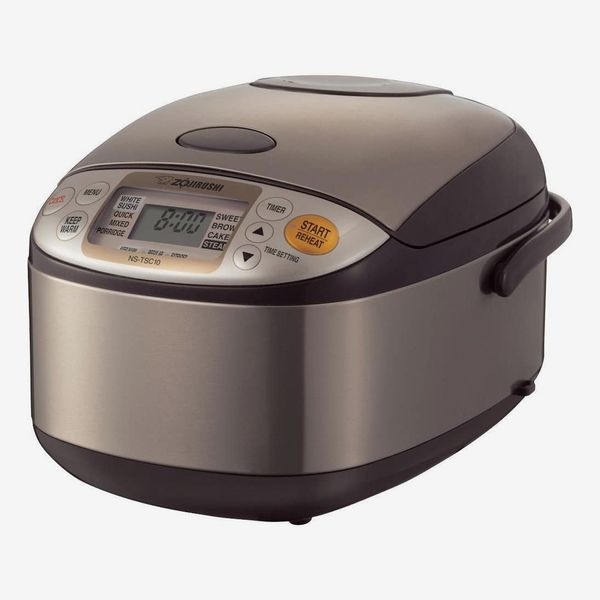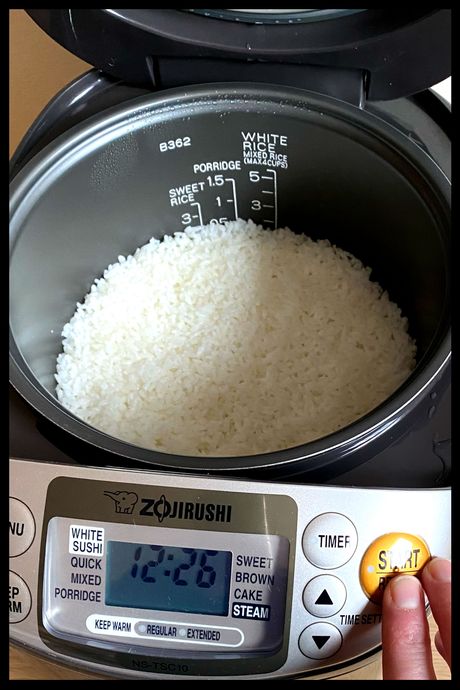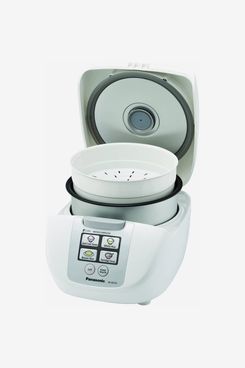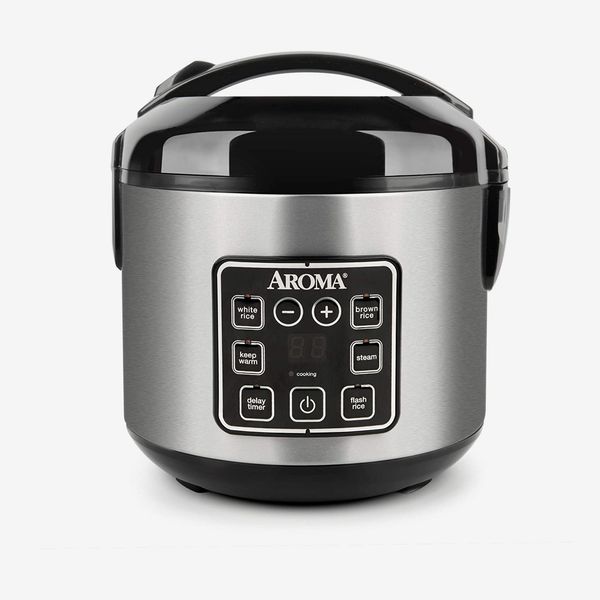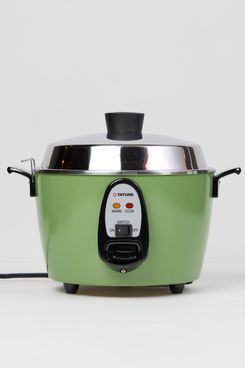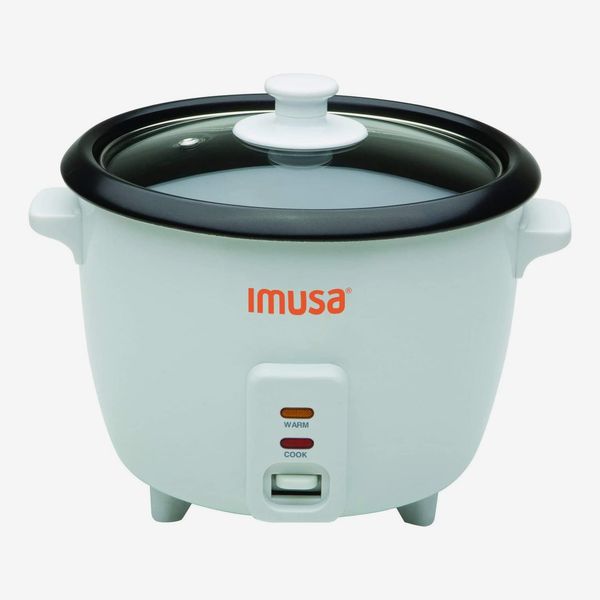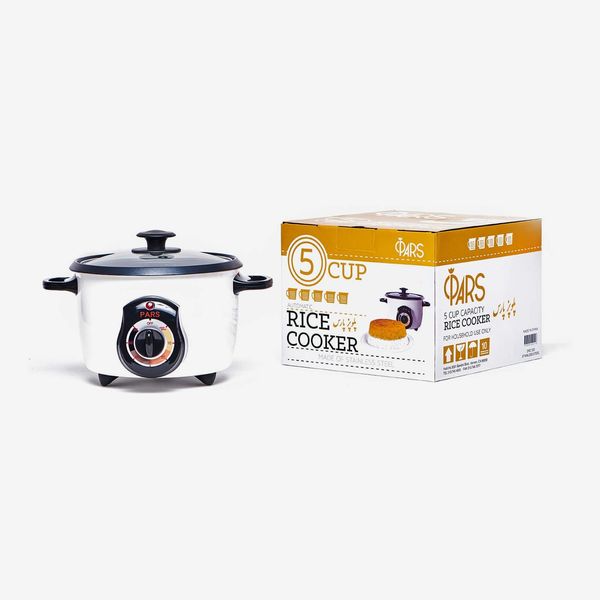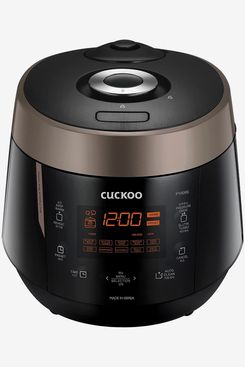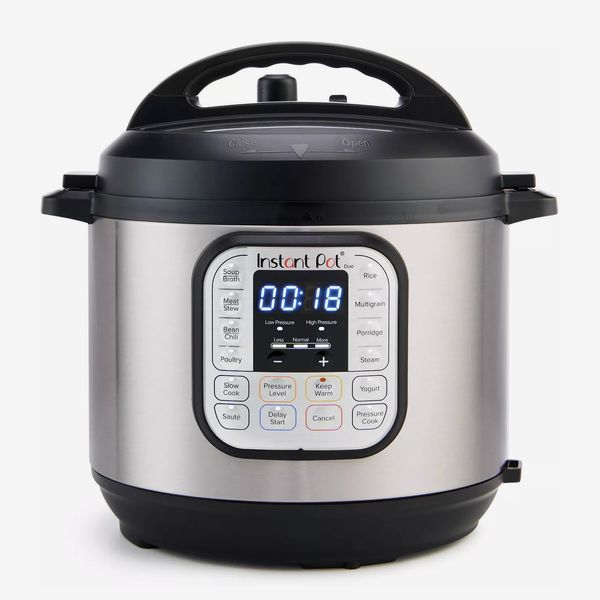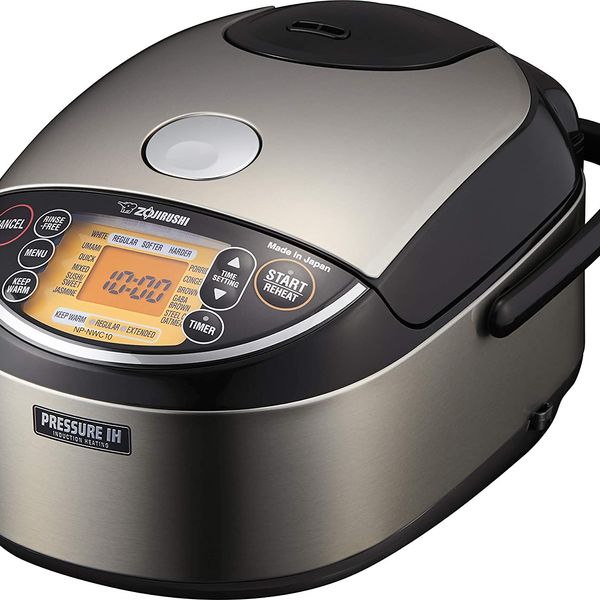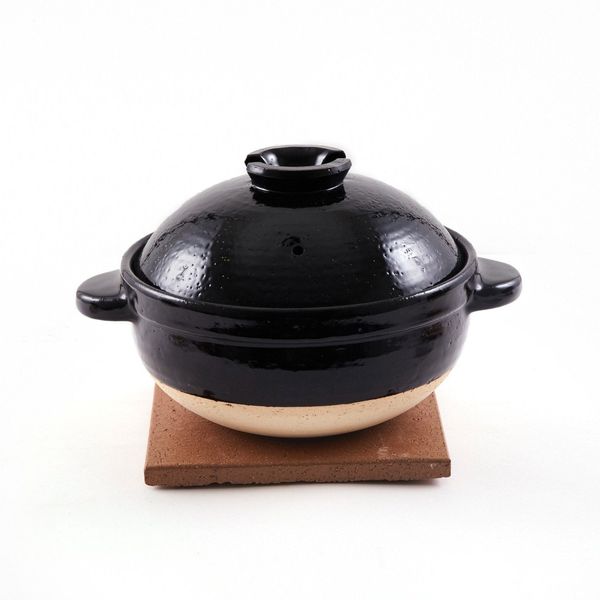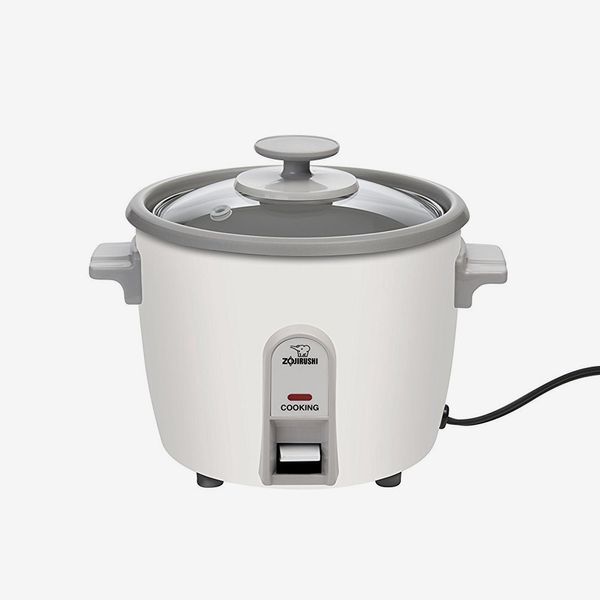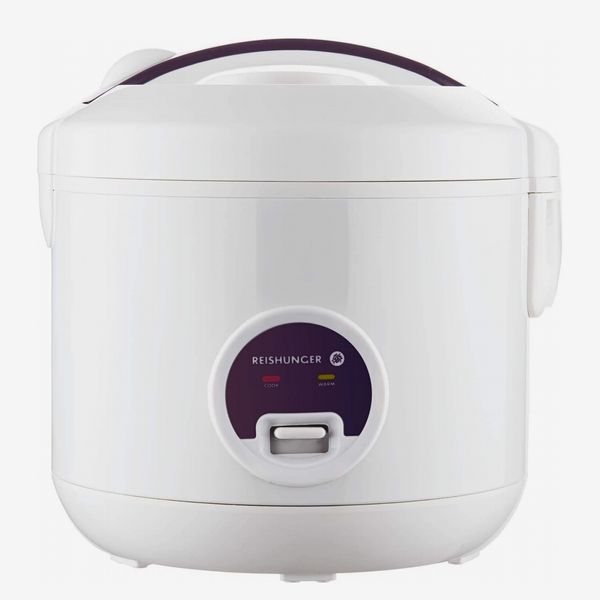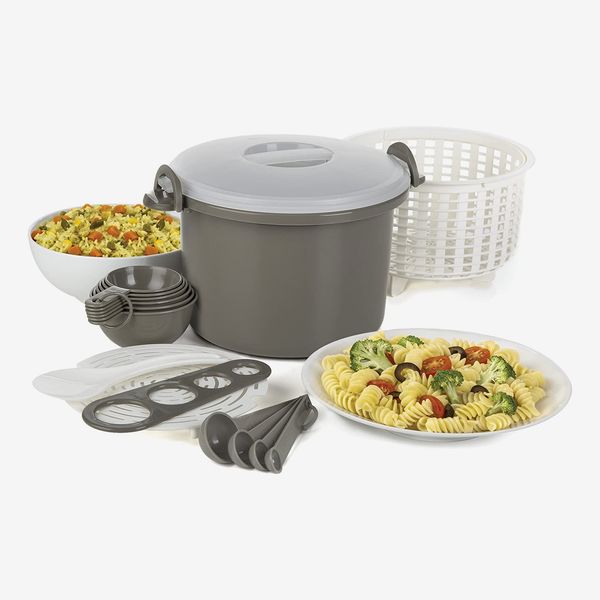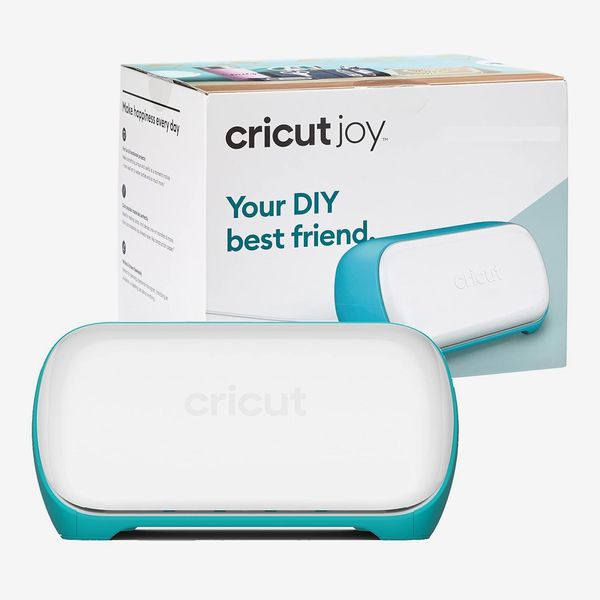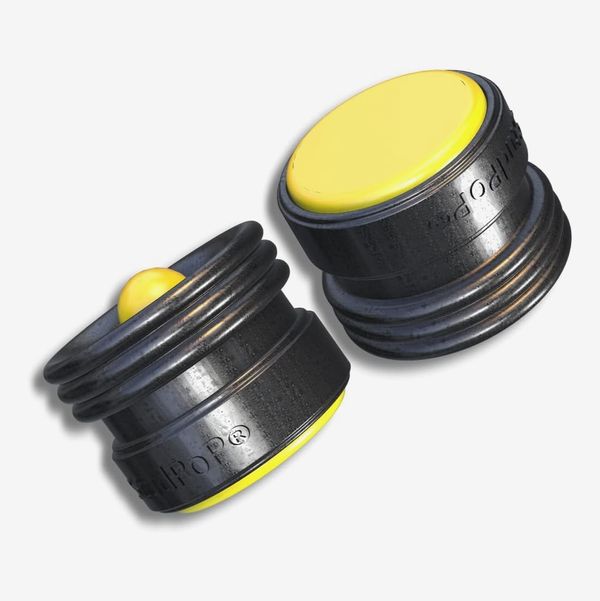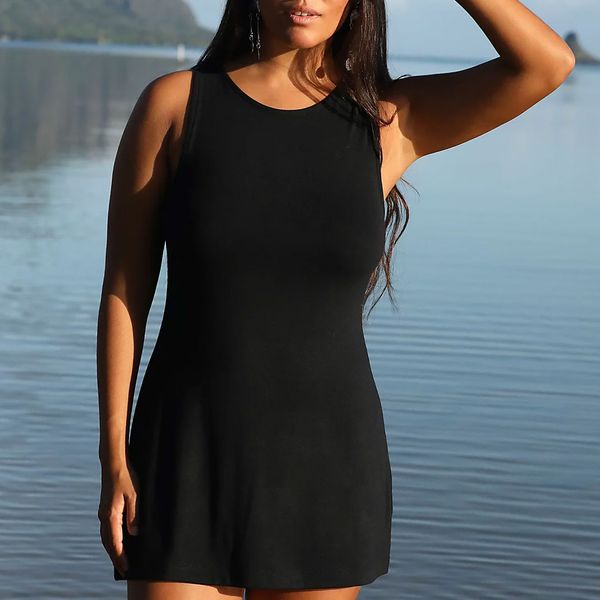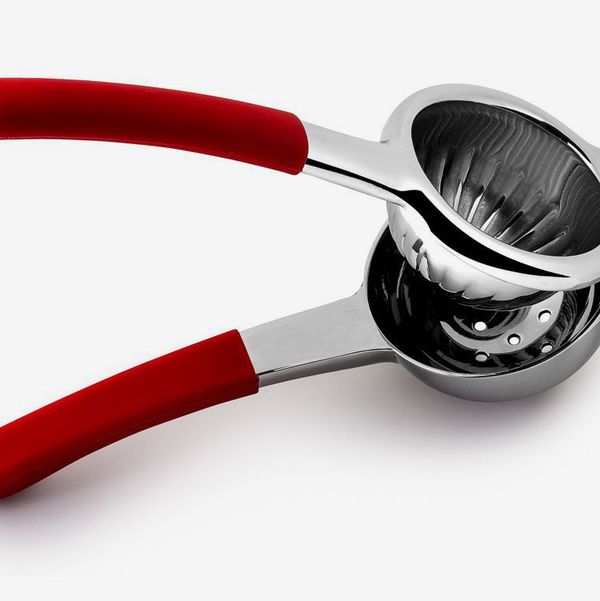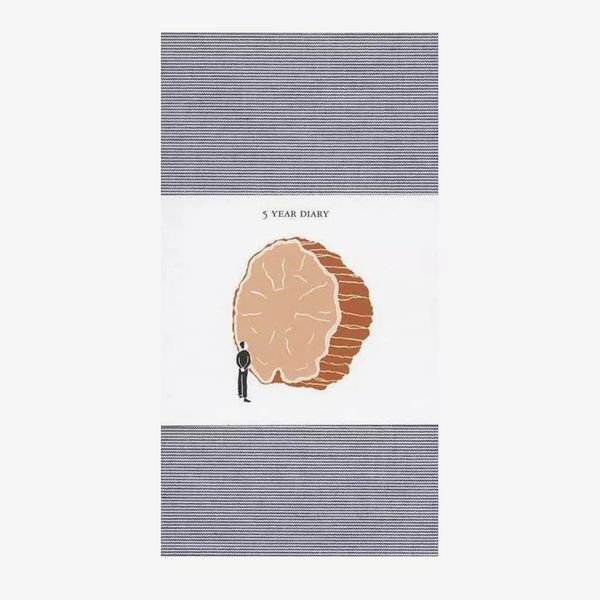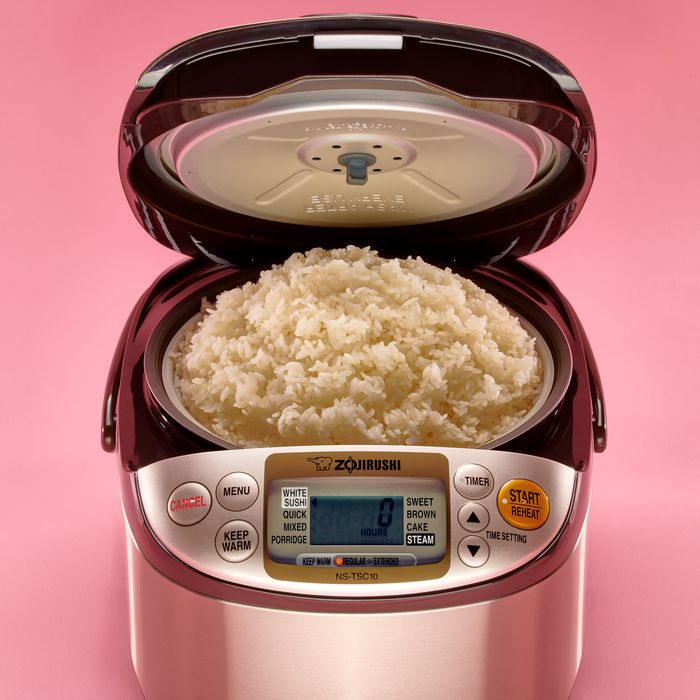
In this article
I eat rice multiple days a week — and used to exclusively make it in a pot on the stove. It’s a deceptively easy task: Measure, rinse, add water, simmer, steam, and less than a half an hour later, you’re done. And yet now and then — no matter if you’re an amateur in the kitchen or consider yourself pretty accomplished — the final result is a letdown. Even though I put myself in the latter category, sometimes my grains turn to mush, sometimes they’re hard in the middle, and all too often, they’re stuck to the bottom of the pot (in my house, the ultimate “let it soak overnight” culprit — never a fun thing to wake up to).
Now I keep a dedicated rice cooker in my kitchen, and I can see why they’re a must-have for so many. They are basically a targeted type of electric cooker that excel at making plump, perfectly cooked grains. They can either be incredibly simple, with just two settings to “cook” and “keep warm,” or they can be quite advanced, with presets for all different types of rice (brown, long grain, sushi, and more), as well as preparations like congee, porridge, and even pressure-cooking (which is, yes, one way in which all those electric cooking tools can overlap).
In testing some of these machines myself, I was curious if the prices — which vary from as low as $23 to several hundred dollars — make a big difference. What I’ve learned is that which model you choose (and the amount you spend) will come down to how you plan to use it. If you only make rice every so often, all the less-expensive machines with basic features should work great. If you make rice very regularly and want a super durable and well-built machine, it might be worth investing in a Zojirushi (I put a couple of its models on this list, and my best overall pick is its mid-range-priced option and the one I’ve decided to keep with me). And if you have other particular interests — steaming, pressure cooking, making the Persian dish Tahdig — there are standouts for each of those tasks, too. To ensure a well-rounded group of options that would hit every note, I incorporated my own experience and sought the advice of 19 experts who each have their own favorite models. And if you’re interested in other electric cookers, check out our guides to pressure cookers and slow cookers.
What we’re looking for
Capacity
Many of the rice cookers below come in multiple sizes. I’ve listed all of them so you can easily see what your options are. Of course, how big of a capacity you go for will depend on how much rice you consume per meal, as well as if you want to have leftovers. But in general, a three-cup rice cooker is good for one or two people, a five- or six-cup rice cooker is good for about four people, and anything bigger is best if you eat a lot of rice or host people frequently for dinner. Also important to remember: The bigger the capacity, the more space the cooker will take up.
Settings
As I mentioned before, some rice cookers come with just a couple of settings, and others come with many. Here, I’ve listed each of the specific functions the given rice cooker can perform. The one exception is the last on this list, which is a manual donabe rice cooker.
Best rice cooker overall
Capacity: 5.5 or 10 cups | Settings: White/sushi, mixed, porridge, sweet, brown, cake, steam, and quick cooking
Since I got my hands on this Zojirushi a year ago, my rice has been evenly tender and fluffy every time. I tend to mostly make sushi rice and long-grain white rice like basmati or jasmine, and the machine excels at both. I’ve also made brown rice a few times and even tested out quinoa and farro to much success. The reason for this is thanks to what the brand calls “fuzzy technology,” or a built-in microcomputer that can sense how your rice is cooking and adjust the time and temperature to get a perfect result if need be. I don’t totally understand the mechanics, but it works. For the grains that don’t have specific settings, the brand has this incredibly helpful guide, and a quick Google search will yield instructions on any type not listed there. I’ve also used the included basket to steam greens and, as Carla Lalli Music taught me, perfect potatoes. And, I think it’s worth noting, I’ve left my rice on the “keep warm” setting for as much as an hour and a half and, remarkably, it doesn’t affect the texture at all. When all is said and done, both the steamer and the inside bowl are a breeze to clean. You pluck them out and any residue rinses right off. My biggest disclaimer: This appliance is big. But if you have the space, it really does live up to the hype.
But don’t just take it from me. In my reporting, Zojirushi came up more than any other brand. They have a fancier model with even more settings that multiple experts mentioned (you can read about that one further down on the list), but this one — especially given that it’s less than half the price of the other — makes for an all-around great buy. Food writer and recipe developer Kiera Wright-Ruiz had to leave hers behind when she recently moved out of the country, and told me it’s the thing she misses the most. “I’m sure people have said this before, but it really is the Lamborghini of rice cookers,” she says, noting that even if you add too little or too much water, it will self-correct. “You get a consistent texture with a margin of error.” Another particularly appealing feature is the ability to preset when you want your rice to cook. “You can sync it to be done at the same time as other foods,” says Wright-Ruiz. “Like if you’re braising something that takes three hours, you can time it so that the rice is done right when your braise is done. Or if you want rice in the morning, you can set it before you go to sleep and it will automatically start so you have rice ready to go when you wake up.” Finally, though perhaps not the most imperative to the rice itself, Zojirushi’s machines play music when you start them (an adaptation of “Twinkle Twinkle Little Star”) and when they’re done cooking — and it’s clearly delightful enough that everyone who recommended the brand (again, more on the rest of those folks below) made mention of the jingles.
Best less expensive rice cooker
Capacity: 5 or 10 cups | Settings: Quick cook/steam, white rice, brown rice, porridge/soup, keep warm
The Panasonic is another simple model, the one that food photographer Neal Santos has also used for a decade — both personally and at his Philly-based Filipino pop-up, Lalo (which unfortunately closed due to the pandemic). “I’m not a high-tech kind of person, and this only has a few settings. That’s what I grew up with in a Filipino household,” he says. “It can be on all the time and stay warm. It has a little basket that can steam veggies over the rice. Sometimes I’ll use it for other dishes as well. The Philippines has a lot of rice desserts — like suman, which is sticky rice wrapped in banana leaf. I put the suman in there and let it stay warm. That’s how we used it at the restaurant. We were in a food hall, so everything was small, and this was an efficient way to do things.”
Reviewers of the Panasonic agree. “The ‘keep warm’ function is so convenient,” writes one, “and I never end up with burnt rice that’s impossible to clean off the pot. In fact, I usually only have to give the pot a quick rinse when I’m done and it’s good to go.” Another says it’s even better than the Zojirushi when it comes to that particular setting. “It keeps white or brown rice warm and ready to eat for 24 hours, without the rice drying out and becoming too hard and brittle,” they write. “The 10-cup Zojirushi we have will dry out the rice overnight.”
Best even less expensive rice cooker
Capacity: 4 cups | Settings: White rice, brown rice, keep warm, steam, delay timer, flash rice
For a particularly low-key model that gets the job done, the Aroma is a great bet. In my own testing, I found the simplicity of the machine wasn’t only good enough, but a plus. While I do appreciate the more targeted settings of the Zojirushi, this one was more intuitive to use initially and has only a few very clear settings. Each time, it has yielded fluffy, perfectly cooked grains, no matter if I’m making long-grain white, short-grain white, or brown rice. The keep-warm setting works well, too. Once, I let a batch sit for a full hour before I ate and it was still moist, but not overcooked.
Recipe developer and cookbook author Abi Balingit expresses a similar sentiment: “It’s very straightforward to use,” she says, “basically dummy-proof.” The cost was also part of the initial appeal, Balingit says, but she’s been using hers for five years with “consistent results every time.” She also appreciates the compact size that fits in the small space above her kitchen cabinets. Still, I’ll note, it fits plenty; I made rice in it for a dinner party of five people and had leftovers. And chef Justin Lee is a fan too. “For home use, I think a cheap and simple one is really all you need,” he says. “Overall, it’s just easier than using a pot — or at least you don’t have to watch it as much. It gets the job done totally fine. And sure, there’s something about the way the Zojirushi is constructed that makes it superior. But at the end of the day, we’re not making sushi rice. This is just us cooking rice at home so we can feed ourselves and our family.” For that, he maintains, it’s perfect.
Best electric steamer rice cooker
Capacity: 6 cups | Settings: Steam, keep warm
Food writer Cathy Erway explains that her rice cooker, ubiquitous in Taiwan, works like an electric steamer: Instead of mixing rice and water directly together, the Tatung heats water in a larger compartment around the bowl that holds the rice. This generates steam and helps the individual grains cook super-evenly. But it also means that “you can steam other foods, like eggs or broccoli, without boiling them,” Erway says, whether that’s on a tray set on top of the rice or without any rice at all. Journalist and cookbook author Clarissa Wei grew up with a Tatung and bought her own a few years ago. She says the cooker emits a very gentle heat, which is ideal for making silky egg custard and also creates “distinct, fluffed-up kernels of rice” that aren’t too sticky. And Yun Hai owner Lisa Cheng Smith (who sells the Tatung in exclusive red and green colors at her shop) says her grains turn out springy and bouncy. She says she also uses it to make soups to stews and to delicately reheat leftovers. All three experts note that the simple on and off switch is a plus. “I don’t need a ton of buttons to do this thing or that thing,” Erway says. “After the first time or two making rice, you know exactly how long it takes.”
Best simple rice cooker
Capacity: 6 cups | Settings: Cook, keep warm
The Imusa literally couldn’t be easier to use — it’s almost toylike. To turn it on, you just plug it in. Otherwise, it operates with a single tab you switch down to cook and up to keep warm (this latter setting is its default when plugged in, and it reverts back to it the moment a batch is finished). To turn it off, you unplug.
In my testing, I found the machine produces nicely textured short- and long-grain white rice: plump and hydrated but not mushy. (I will note that though I haven’t tried it with brown rice yet, some reviews say this doesn’t work as well because a lot of water collects in the lid, so I might not opt for this model if you plan to make longer-cooking varieties.) I like the clear lid, too (the only one on this list that has this feature besides the Persian rice cooker below). It doesn’t actually do anything, but there’s something satisfying about being able to peek inside.
Recipe developer and writer Justine Doiron loves her Imusa because of its simplicity — and also because of its reliability. She first bought it about eight years ago at Target because it was the cheapest one she could find. Despite the notably low price, the machine has proven to be incredibly durable and has“never done me wrong,” she says. “When a cooking appliance is only meant for one use, you don’t need the fanciest model.”
Best Persian-rice cooker
Capacity: 3, 4, 5, 7, 10 or 15 cups | Settings: Customizable timer, keep warm
The Pars Persian-rice cooker is built to do something different from all the others on this list: make tahdig, the ubiquitous, crispy layer of rice at the bottom (and top, when you turn it over) of many preparations of Persian rice dishes. “I’m an avid home cook, but rice was always tough for me, and that’s part of why for a while I avoided cooking a lot of Persian food,” says writer Arya Roshanian, who chronicled his foray into using the Pars for Vox last year. Funny enough, his mom and grandmother both used one, and it was during the pandemic that he finally decided it was time to get one himself. In fact, he has two now — the smaller four-cup he started out with and a larger seven-cup he uses to make tahdig for a crowd. “It’s user-friendly,” he says, “something that my 85-year-old grandma who only speaks Farsi and isn’t that good at technology can figure out. The first time I used it, I was thinking I would need to try a few times in order to get it right, but it came out pretty perfectly — and then each subsequent time too.” Roshanian also likes that the insert is lightweight and “nonstick so it’s super-easy to flip out and clean.”
Best rice cooker with pressure cooking
Capacity: 10 cups | Settings: White rice, glutinous turbo, mixed rice, brown rice, high heat, GABA rice (germinated brown rice), porridge, nu rung ji (scorched rice), multi-cook, auto-clean, pressure cook, reheat, keep warm, preset timer
“I bought a Cuckoo because that’s what my mom and aunts use,” says Joanne Lee Molinaro, better known as the Korean Vegan. “When you go to a Korean grocery store, you see a bunch of Cuckoos all over the place.” Molinaro uses hers — a slightly older but similar model to the one listed — primarily for brown rice as well as mixed rice, the setting for which she uses every time she adds soybeans, farro, pearled barley, and even chestnuts and sweet potatoes. For food writer Justine Lee, who has the more recent model, “the multi-cook setting is where it stuns.” Multi-cook essentially turns the appliance into a pressure cooker and allows you to adjust the time and heat level. “Both are as easy as dialing the knob to set,” says Lee. “It’s how I steam a bunch of Korean sweet potatoes right before road trips and quell my bean hankerings come summertime. I’ve even followed recipes fitted for a traditional Instant Pot such as cinnamon buns and yakbap, which can get sticky. But cleanup with this rice cooker is a breeze across the board.”
If you’re interested in the brand but don’t care so much about the multi-cook feature, Strategist editor Maxine Builder has an even older version of this under-$100 Cuckoo that still works perfectly after she’s used it for the past several years. (Her exact model is older still than the one linked and not available online anymore.)
Best less expensive rice cooker with pressure cooking
Capacity: 3 quart, 6 quart, or 8 quart | Settings: Rice, soup/broth, meat/stew, bean/chili, poultry, multigrain, porridge, steam, saute, yogurt, slow cook, pressure cook, keep warm
It’s no secret that the Instant Pot can do a lot — but Strategist senior editor Jen Trolio primarily uses hers for rice, making it for her family of four at least once a week. She takes a stainless-steel mixing bowl, fills it with equal parts water and rice, and sets it inside the Instant Pot on top of the wire rack the unit comes with. Then she puts a half-inch or so of water at the bottom of the larger container (not covering the top of the rack). She cooks on high pressure for four minutes then does the slow release for about ten minutes (with a manual release if there’s any pressure remaining at the end). With a little fluff, it’s ready to go. “It’s nice to have the (nearly) set-it-and-forget it convenience of a ‘rice cooker’ that is also multipurpose for pressure cooking, slow cooking, and so on,” Trulio says. “Obviously we could still do rice on the stove, but on top of the convenience, the Instant Pot can be shoved to the edge of the counter and not take up a burner.”
Best high-end rice cooker
Capacity: 5.5 or 10 cups | Settings: White (regular, softer, or harder), umami, mixed, sushi/sweet, Jasmine, porridge, congee, brown, GABA brown (germinated brown rice), steel cut oatmeal, quick cooking, automatic keep warm, extended keep warm, reheat
This is the previously mentioned higher-end Zojirushi model that so many experts enthusiastically recommended. It is, notably, the most expensive on the list, but it’s also clearly a favorite a worth-it investment if you eat enough rice. It has that same standout technology as the more affordable model, but the main difference is the many settings. Everyone who I talked to about it mentioned one in particular: “This model I bought specifically because it has a congee mode,” says food writer and editor Alyse Whitney. “The one I had previously for many years only had Japanese porridge, which is thinner. So yes, I bought this for a button, but it literally makes perfect congee.” Recipe developer and cookbook author Betty Liu also makes a lot of congee in hers, calling it “convenient, fast, and incredibly reliable.” And finally TikTok recipe creator Vivian Aronson uses that feature too, particularly for breakfast. “I can set it at night and have congee ready in the morning,” she says.
Best donabe
Capacity: 1, 3, 4, or 5 cups | Settings: None
Jing Gao, the founder of Strategist-favorite brand Fly by Jing, has multiple donabes from the Los Angeles–based shop Toiro in her kitchen, including this one specifically for cooking rice. While she also owns a Zojirushi, she swears this manual method makes the rice taste better. While Gao’s vessel is similar to a traditional donabe you would use for soup or stew, in that it’s made from porous clay, there are a few key differences that allow the grains to cook especially evenly. First, as Toiro owner and donabe expert Naoko Takei says, it’s about one-and-a-half times thicker than the other models she sells, meaning it takes longer to build heat. Second, there’s an inner lid underneath the top lid, which adds pressure. And finally, it has a rounded shape, creating “the most ideal circulation of water and moisture and steam during cooking,” she says.
To use this donabe, you simply set your flame to medium high, let it go for about 15 minutes, turn it off, then let it sit for another 20 to further steam. It was designed to be just as convenient and simple to use as electric versions (with traditionally shaped donabes and standard stainless-steel saucepans, you have to change heat levels and keep an eye on things).
Gao also points out that, beyond providing superior taste and texture, the donabe looks beautiful. “Being able to display it out in the open is really nice,” she says. “It inspires you to cook with it.”
Some more rice cookers we’ve written about
Our experts
• Vivian Aronson, TikTok recipe creator
• Abi Balingit, recipe developer and cookbook author
• Maxine Builder, Strategist editor
• Justine Doiron, recipe developer and writer
• Cathy Erway, food writer
• Jing Gao, founder of Fly by Jing
• Justin Lee, chef
• Joanne Lee Molinaro, writer, recipe developer, and cookbook author
• Betty Liu, recipe developer and cookbook author
• Arya Roshanian, writer
• Neal Santos, food photographer
• Lisa Cheng Smith, owner of Yun Hai
• Naoko Takei, owner of Toiro
• Jen Trolio, Strategist senior editor
• Clarissa Wei, journalist and cookbook author
• Alyse Whitney, food writer and editor
• Kiera Wright-Ruiz, food writer and recipe developer
The Strategist is designed to surface the most useful, expert recommendations for things to buy across the vast e-commerce landscape. Some of our latest conquests include the best women’s jeans, rolling luggage, pillows for side sleepers, ultra-flattering pants, and bath towels. We update links when possible, but note that deals can expire and all prices are subject to change.
Every editorial product is independently selected. If you buy something through our links, New York may earn an affiliate commission.

